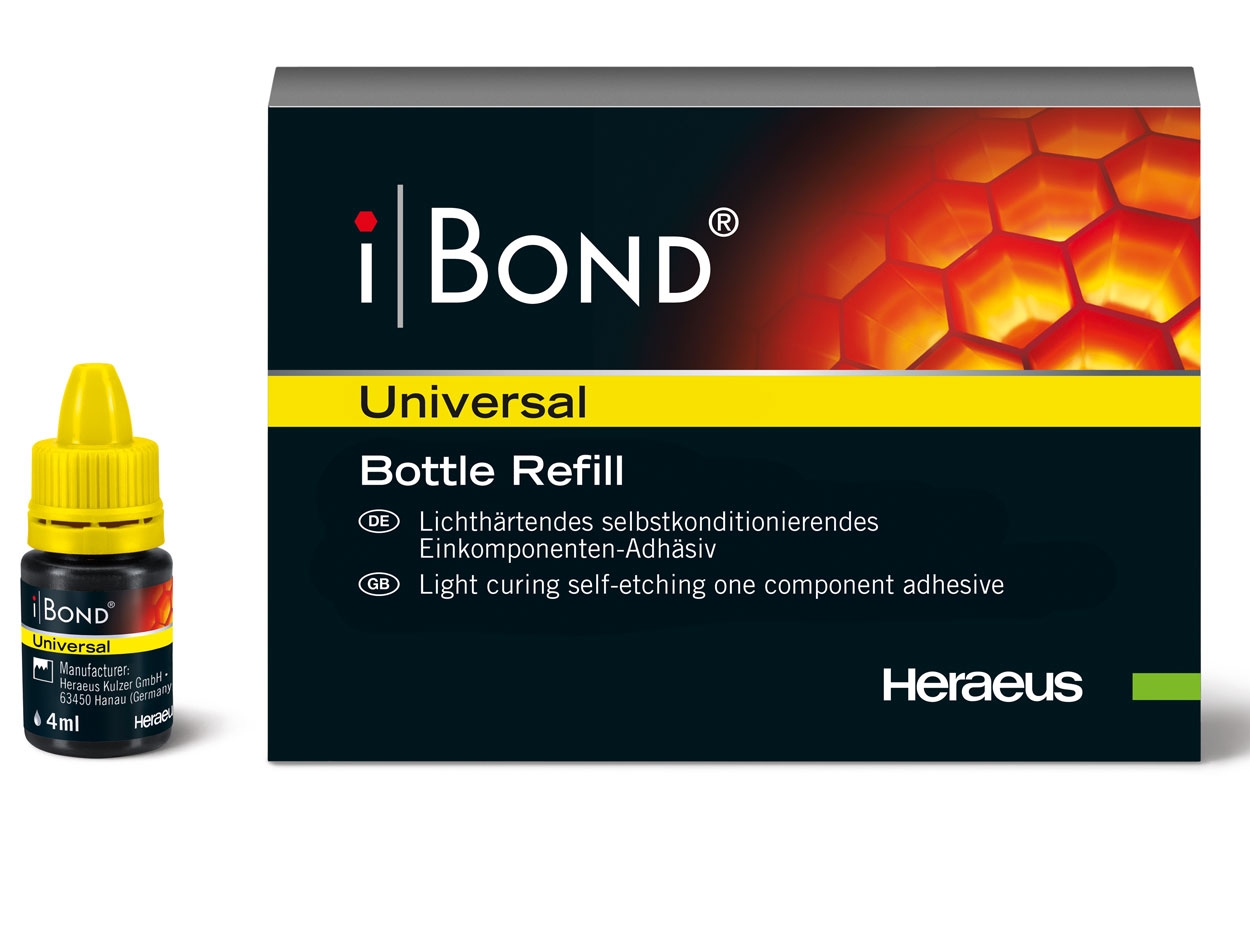
Designed for strength, convenience, and efficiency, the iBond Universal light-curing adhesive for all bonding techniques from Heraeus Kulzer suits all indications and is compatible with all dental materials.
“Since the launch of universal bonding agents several years ago, there has yet to be defined a true meaning of the term,” said Aundrea Hoffman, product manager at Heraeus Kulzer. “‘Universal’ may mean one battle, all indications, all techniques, self/dual cure compatibility without the use of an activator, desensitizing properties, no refrigeration, easy to use, etc. We’ve taken all of these characteristics and combined them into iBond Universal.”
The indications for iBond Universal include:
- Bonding of direct restorations for all cavity classes (black) using light-curing, dual-curing, or self-curing methacrylate-based composites and compomers;
- Bonding of light-curing, dual-curing, or self-curing core build-up materials;
- Sealing of hypersensitive tooth areas;
- Sealing of cavities prior to amalgam restorations;
- Bonding of fissure sealants;
- Sealing of cavities and core preparations prior to temporary cementation of indirect restorations according to the immediate dentin sealing technique;
- Cementation of indirect restorations with light-curing, dual-curing, or self-curing adhesive resin cements.
Building upon the previous iBond Self Etch and iBond Total Etch, iBond Universal also is indicated for intraoral repair of composite and compomer restorations, PFM, and metal and all-ceramic restorations. Furthermore, it now allows the repair of all types of direct and indirect restorations, though it needs to be combined with iBond Ceramic Primer in silicate ceramic restorations.
With all of these uses in mind, the company also designed iBond Universal to be easy to use. Two applicator tip sizes are available to provide the flexibility to address any size cavity. Also, the drop control nozzle is designed to provide efficient and controlled dispensing and application, with up to 220 drops per bottle.
“We’ve noticed that many adhesive bottles can be messy while wasting valuable product,” said Hoffman. “Our new dropper design makes controlling the right amount easier for the clinician.”
Additionally, iBond Universal uses acetone as a solvent to ensure the fast and reliable evaporation of water, which is necessary for a durable and consistent bonding system. During air-drying, the water phase is separated from the monomer phase to improve bonding efficiency. Less residual water in the hybrid layer is key to stability.
“Water is always present during cavity preparation and is also an important component in adhesives to achieving efficient etching of the tooth. After application and etching, both the water and solvent have to be optimally removed to enable efficient adhesive water polymerization throughout the light curing process,” said Hoffman. “Acetone as a solvent, with very high air pressure, supports this evaporation process. Therefore, this acetone/water system ensures an optimal polymerization result, thereby maximizing bond strength.”
Also, iBond Universal is compatible with total etch, selective etch, and self-etch techniques. Only 10 seconds are required for curing as well. It is compatible with light-, self-, and dual-cure materials without the need for a dual-cure activator.
According to Heraeus Kulzer, fractures and chips can be restored intraorally in one appointment instead of scheduling costly replacements. Restorations with zirconia and precious and nonprecious alloys and composites can easily and quickly be repaired with one layer. Also, iBond Ceramic Primer can be used to bond and repair silicate ceramics for excellent bond strength, the company says.
For more, call (800) 431-1785 or visit heraeus-kulzer-us.com.
Related Articles
I’m Beginning to See the Light
Update Improves 3D Imaging Software
Virtual Dental Care Improves Care and Cuts Costs












